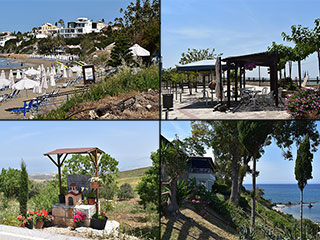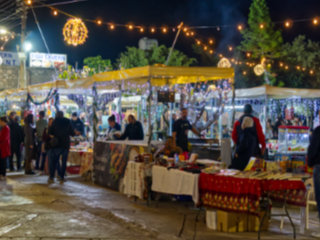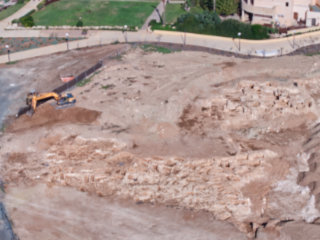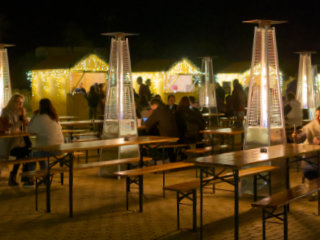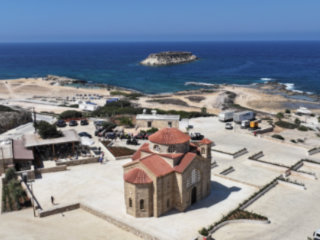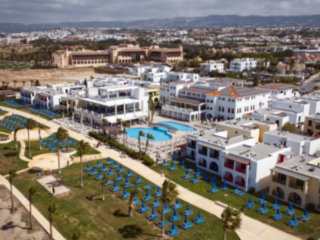The House of Dionysus
The House of Dionysos is the jewel in the crown of Paphos Archaeological Park - a fine collection of well-preserved mosaics, conveniently located under one roof." When people refer to the mosaics in Paphos, they are usually talking about this place. So let's take a look.
Outside The House
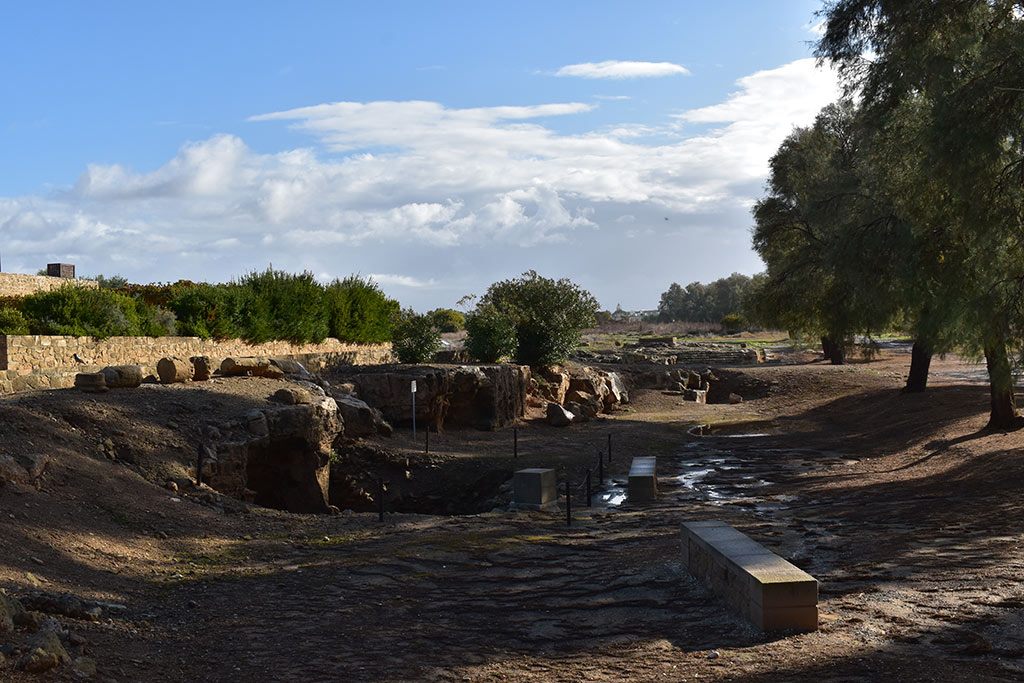
This is the second part of our detailled tour of Paphos Archaeological Park. If you are following along you will have already been to the houses of Aion and Theseus and will have now made your way here. Before entering the house it is worth having a look around outside. The house was built on top of older remains, and you can see some of them here.
Incidentally, if you missed the first part of our tour use the link below.
Early Mosaic
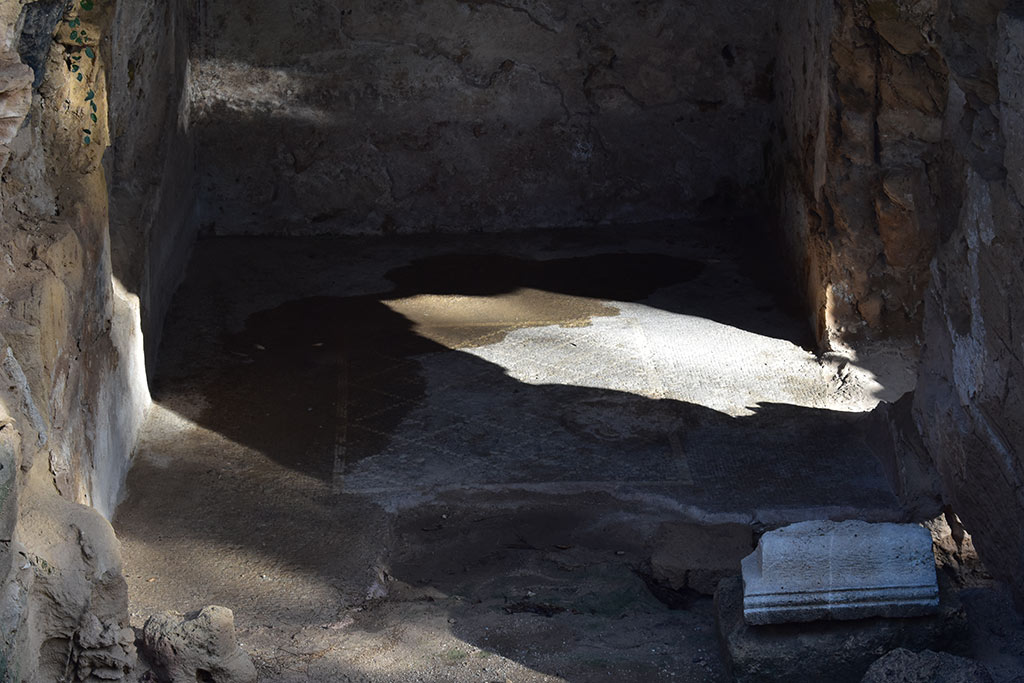
There are even some geometric-patterned mosaics you can just make out. It gets better inside though.
Nice View
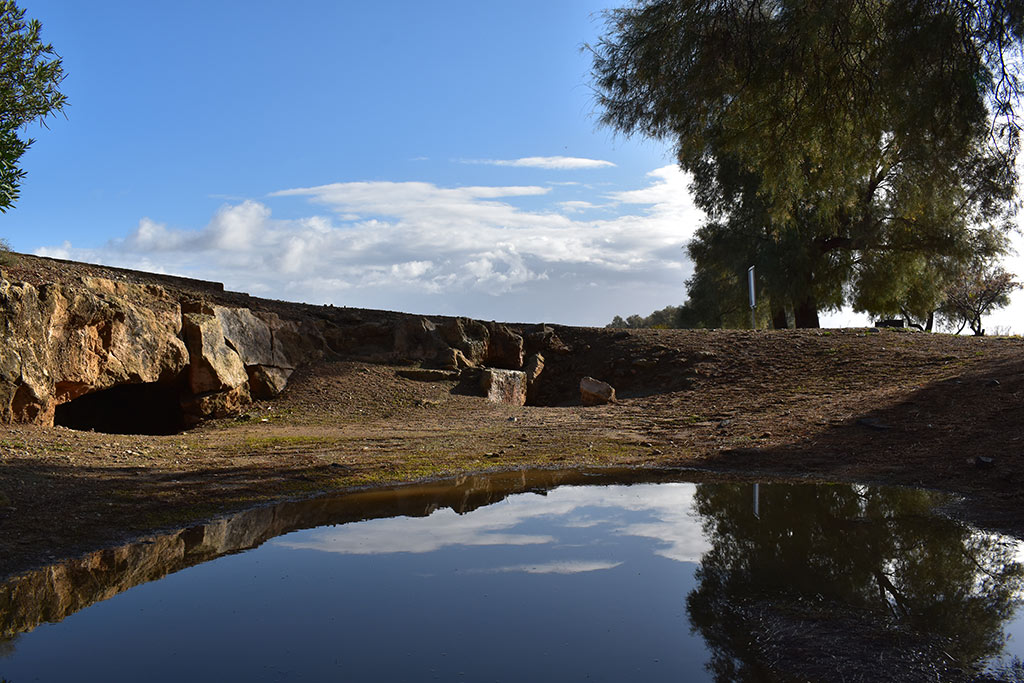
There is not normally a lake here. However, there had been a lot of rainfall before we went on this particular visit, so we were lucky enough to be able to capture this scene.
External Rooms
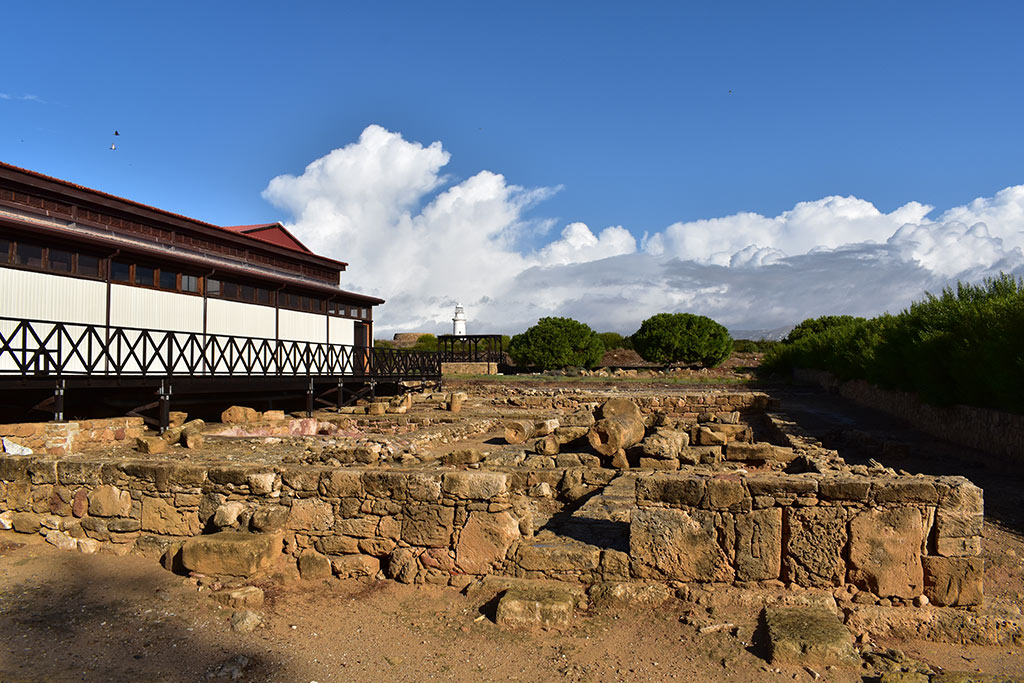
Before entering the house you cannot fail to notice all the other rooms that aren't covered up. I wonder how many more mosaics must lurk under there, waiting to be discovered? There is also a sign outside.
Dionysus Mosaics
The House of Dionysus (2nd – 4th cent. A.D.)
The area has been excavated by the Department of Antiquities of Cyprus and was the first house with mosaic floors to be discovered in Pafos. The house consists of a peristyle atrium with a garden pool and about forty rooms on all sides. All the communal rooms and halls around the atrium are paved with mosaic floors. Near the atrium a pebble mosaic representing the monster Scylla was discovered. This is the oldest mosaic floor in Cyprus, belonging to an earlier building located under the House of Dionysus, dated to the early Hellenistic period.
The house was named after the figural scenes inspired by the Dionysus mythological circle, which decorate the reception hall. In the most prominent place, the triumph of Dionysus is represented. Other scenes represent Dionysos and Acme, Ikarios and the shepherds, Poseidon and Amymone, Pyramos and Thisbe and the metamorphosis of Daphne. On the floor of the reception room, a large vintage scene is represented while a series of hunting scenes is represented on the floors on three sides of the atrium. Other rooms of the house are decorated with scenes depicting Hippolytos and Phaedra, Zeus and Ganymedes, Narcissus and the personification of the four seasons. Finally, other rooms are decorated with multicoloured geometrical compositions and other decorative motifs.
When you see italic text like the above in the blog, we have transcribed it from a sign on-site.
Begin at the Beginning
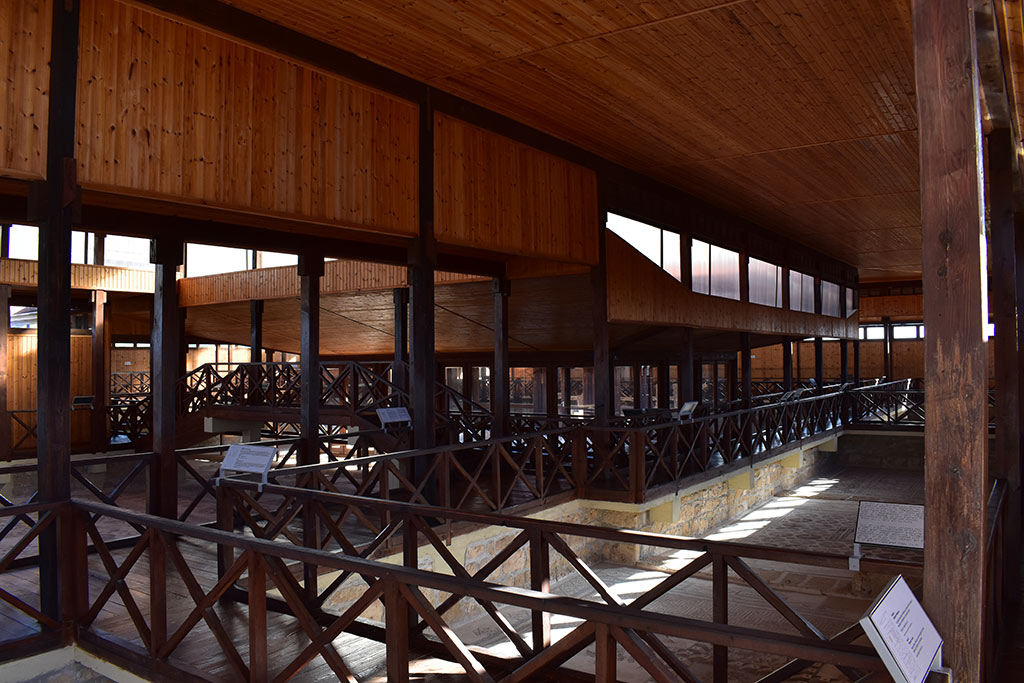
This is the main entrance to the house. There is another plaque here with more information:
House of Dionysos
Luxurious Roman residence with an atrium and an impluvium, a central open court surrounded by a colonnaded portico, and a wealth of mosaic floors. It was built during the end of the 2nd cent A.D. and was destroyed in the first half of the 4th cent. A.D., probably due to earthquakes. The house was constructed on earlier buildings, the earliest of which was a sanctuary carved into the natural bedrock.
The building occupies an area of 2000m2, 556m2 of which are decorated with mosaic floors. The building has been named the “House of Dionysos” as many of the mosaics depict scenes related to the worship of the god Dionysos. All the mosaics are in situ except the mosaic depicting “Scylla”.
The house was excavated between 1962 and 1965 by Dr. Kyriacos Nikolaou, then Curator of the Department of Antiquities.
Page 1 of 7

Related Blogs:
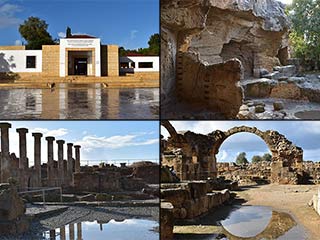
Paphos Archaeological Park - Summary
We first blogged about the Archaeological Park a couple of years ago. It was a short blog, and focused mainly on the pretty spring flowers. Now we are returning, to give the rest of the park the attention it so richly deserves.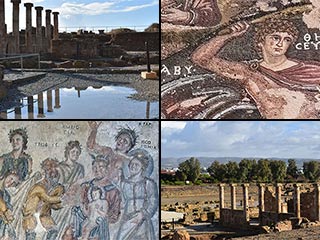
The Houses of Aion and Theseus
It's time now to start our detailled look at the Archaeological Park, so let's begin at the beginning. Once you enter the Archaeological Park, if you keep left, the first sites you will arrive at the The Houses of Theseus and Aion. Let's take a look at their mosaics and other attractions...Good Pages To Visit
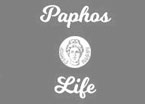
FB PagePaphos Life on Facebook
Like us on Facebook and stay notified of new blog posts.

FB PageOur Facebook Chat Group
Paphos Chat has been created for people who like our site and want to chat using Facebook. You can also easily upload photos of any size here. A lot of people are members of the Facebook chat group and the main forum. It's entirely up to you.
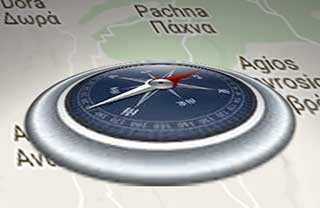
ListBlog Locations
Planning a day out? Then use our map of blog locations as a handy guide. Some of the places we visit our closer to each other than you might think, so take a look and start planning your next adventure...
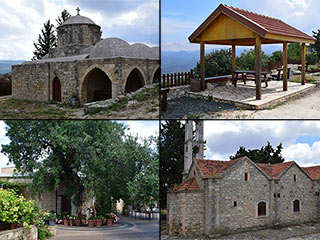
eBookCyprus Road Trip 01: the Kathikas - Panagia Loop
Let me take you on a journey around the region of Paphos, Cyprus. Starting at Paphos itself, we travel to Akoursos, then Kathikas, Kritou Terra and Simou. We continue past Lasa and Kannaviou, before taking in the delights of Panagia. Getting a bit more adventurous, we visit the abandoned villages of Statos and Agios Fotios, before passing through Choulou, Letymbou and Polemi, and rejoining the main Paphos - Polis road.
The route is suitable for all types of vehicle, and requires no off-roading. The guide contains about 130 photographs including shots of all the road signs you need to pay attention to, as well as some of the highlights you may experience along the way.
There are also several maps which will help you keep your bearings.
You can do this journey in a day, or you can break it up into chunks. You can also do it in reverse, to get some completely different views. It is entirely up to you.
